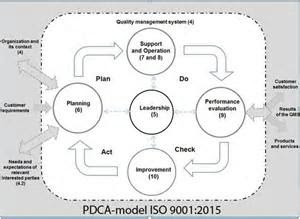Logmaster is a NHVR accredited electronic work diary that is compliant for use on Apple and Android smartphones and tablets. Click this banner to see our accreditation.
Logmaster is a NHVR accredited electronic work diary that is compliant for use on Apple and Android smartphones and tablets. Click this banner to see our accreditation.
The purpose of the Logmaster Australia quality and safety management system is to ensure that Logmaster Australia ensures quality and safety in processes and practices with the goal of continuously improving our services and systems.
Quality and Safety Management System Governance
Leadership shall determine the scope of the quality and safety management system and the context of the business in the marketplace as well As the consumer and client base interaction of relationships.
This policy is applicable to all staff at Logmaster Australia and is relevant to service providers contracted by Logmaster Australia and has a responsibility to ensure that service providers contracted by the company have their own processes for implementing management policies and information that are in alignment with this policy. Validation is required in contractual arrangements to enable transparency.
Final approval of the content within the system is at Executive level.
This policy
Scope
This policy applies to the system content and processes provided to or about Logmaster Australia and the services it provides directly.
Logmaster Australia shall have an understanding the external context that can be facilitated by considering issues arising from legal, technological, competitive, market, cultural, social, and economic environments, whether international, national, regional or local.
NOTE: This policy may interact with the management of quality and safety policy and procedures related to Human Resources, Information Technology and data security, privacy, financial etc. which are covered in other policies and procedures.
Information regarding external documentation applicable to the services provided by or received by Logmaster Australia are managed according to the following principles which are based on best practice Australian guidelines and services.
Risk and Issues are integrated in accordance with the risk management framework identified from Governance resilience and status and importance of this policy.
Logmaster Australia aims to ensure that we meet and exceed industry standards in quality and safety Management governance and management.
This is done through engagement with external agencies, consumer groups and organisations to ensure continued appropriateness, relevance, and suitability to the purpose of providing services to the Australian population and others as requested.
Any identified areas of improvement are championed to resolution by the Logmaster Australia IT and Risk Coordinators, Governance and Quality Manager, executive support from the Executive Director.
Logmaster Australia includes an orientation to the quality and safety management system Governance and Quality Framework and associated safety and quality policy and procedures and related processes in the onboarding of all new Logmaster Australia employees.
Logmaster Australia has mechanisms in place to seek regular feedback from its workforce during staff engagement surveys regarding the organisations safety and quality systems in a manner that allows for anonymous feedback.
Logmaster Australia service providers have responsibility for ensuring adequate training and orientation is given to employees on the Governance Framework, which incorporates the safety and quality systems in Management governance.
Logmaster Australia shall determine to content of the quality and safety management system to inform internal and external stakeholders on:
The Logmaster Australia objectives are:
Logmaster Australia shall maintain documented information as per the quality objectives. The extent of the system shall reflect the governance, the operational processes and services delivery in Logmaster Australia.
Embedded current quality policy (statement) and procedures, work instructions, forms are included in the system for the quality policy and corporate as well as operational objectives, leadership and strategic planning requirements, definition of services provided, document and records control, non-conformance and incident management, customer focus and complaint and compliments management, internal audit, management review process and records, risk management, project and design management, purchasing and procurement, relations ships with external stakeholders, legislative and regulatory requirements, people management, education and training, infrastructure and technology maintenance and support, data analysis, key performance indicators and action plus continuous improvement strategy.
Evidence of all components.
When creating and updating documented information, the organization shall ensure appropriate:
Documented information required by the quality and safety management system and by reference to the International Standards ISO/EC 9001:2015 and ISO/TR 10013 shall be controlled to ensure:
For the control of documented information, the Logmaster Australia shall address the following activities, as applicable:
Documented information of external origin determined by Logmaster Australia to be necessary for the planning and operation of the quality management system shall be identified as appropriate and be controlled.
Documented information retained as evidence of conformity to the internal quality and safety management system content shall be protected from unintended alterations.
Note: Any access can imply a decision regarding the permission to view the documented information only, or the permission and authority to view and change the documented information. As per the document and records control work instruction.
In addition, the Logmaster Australia Management Governance team uses this these learnings to drive improvements to safety and quality systems across the organisation through representation on organisational governance and leadership committees.
All service providers are required to adhere to the Logmaster Australia principles of this policy as relevant to the service and articulated in service contracts.
A structured process to identify issues, evidence and process of an incident will be applied as per the risk rationale.
Risk reporting shall be transparent and formal, trends and tracking will highlight emerging or recurring patterns. A report is provided to the Logmaster Australia Board quarterly.
Risk is the effect of uncertainty and any such uncertainty can have positive or negative effects. A positive deviation arising from a risk can provide an opportunity, but not all positive effects of risk result in opportunities.
An extreme operational risk statement is related to or follows interaction with a Logmaster Australia service may be but not limited to a report of an unexpected major permanent loss of function.
An extreme corporate risk statement is related to or follows interaction with a Logmaster Australia service that attracts negative media exposure.
A high-risk statement is related to or follows interaction with a Logmaster Australia service may be but not limited to a report of a serious life-threatening event for a person either as a contact caller, a staff member or a visitor.
A medium risk statement is related to or follows interaction with a Logmaster Australia service may be but not limited to a report where a caller was provided with incorrect advice that impacted on the level of service that the client required. A breach of privacy regarding provision of personal information about a consumer, user or a staff member.
A low-risk statement is related to or follows interaction with a Logmaster Australia service may be but not limited to a report where a consumer or a staff member is provided with information that is incorrect but does not incur harm or an adverse effect.
ISO 9001:2015
Documents and records control
Management of information systems
Privacy Act 1988 and amendments to 2021
ISO 9001:2015 cl.5.1 cl. 7.5 cl. 8.2.1 cl 8.4.3 cl. 9.3.2 cl.10.2 and sections A.3, 4, 5, 6 and 7
ISO 10013 – quality system documentation
ISO 31000:2018 Principles of Risk Management
Version 2 | Original Policy Development | August 212021 |
Version 2 | Policy Approved by Executive Director | August 21 |
Version 2 | Policy Implemented | JAN 2021 |

